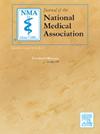院校特点、教师职级和统一种族和民族教员的代表性。
IF 2.5
4区 医学
Q1 MEDICINE, GENERAL & INTERNAL
引用次数: 0
摘要
引言:有充分的证据表明,在学术医学中,代表性不足的教师集中在较低的教师队伍中,而不是代表性好的同行。这种晋升差距导致医疗机构共同努力,改变围绕这一群体的学术文化和氛围。本研究提供了少数族裔教师代表性不足的更详细特征,评估了美国医学院教师排名的纵向趋势,特别是在学术排名、地区、所有权、机构类型、社会使命得分和研究强度排名方面。材料和方法:使用来自AAMC教员名册、AAMC组织数据库和Mullan等人的社会使命评分的数据,构建多重调整广义估计方程(GEE)模型,以评估如上所述的按种族/民族、学术等级和特定机构特征划分的教员人数趋势。结果与讨论:与南方的URM师资队伍相比,西部URM师资队伍的变化率要高1.7 %。在教师级别,与南方相比,西方所有种族的变化率都有所增加,亚洲教师增加了6.3% %,白人教师增加了5.1% %,URM教师增加了5. %。与以白人为主的院校相比,URM在hbcu的教师水平的变化率下降了4.9% %。私立大学教授级教师的变动率为1.7 %,比公立大学大幅增加。在社会使命得分高的学校,URM教授级教师的比率比社会使命得分低的学校下降了1.4 %。研究结果表明:在地区、所有权、机构类型、社会使命得分和研究强度排名上,URM的总体师资趋势存在差异。不同的制度特征对不同学术等级的大学教师产生了不同的影响,这些差异的原因需要进一步研究。本文章由计算机程序翻译,如有差异,请以英文原文为准。
Institutional characteristics, faculty rank and URM faculty representation
Introduction
It has been well documented that underrepresented faculty in academic medicine are concentrated in lower faculty ranks than their well represented counterparts. This promotion disparity has resulted in concerted efforts by medical institutions to change academic culture and climate surrounding this group. This study provides a more detailed characterization of minority faculty underrepresentation, evaluating longitudinal trends in faculty rank among US medical schools looking particularly at academic rank, region, ownership, institution type, social mission score and research intensity ranking.
Materials and Methods
Using data from the AAMC Faculty Roster, AAMC Organizational database, and Mullan et al.’s social mission score, multiple adjusted Generalized Estimating Equation (GEE) models were constructed to evaluate trends in faculty number by race/ethnicity, academic rank, and specific institutional characteristics as noted above.
Results and Discussion
Compared to URM faculty in the South, the change rate of URM faculty is higher by 1.7 % in the West. At the Instructor rank, there are increased rates of change for all racial groups in the West when compared to the South by 6.3 % for Asian faculty, 5.1 % for White faculty, and 5 % for URM faculty. URM faculty at HBCUs at the Instructor level have decreased rates of change by 4.9 % as compared to predominantly white institutions. URM Professor rank faculty at private institutions showed significant increased rates of change of 1.7 % as compared to public institutions. URM faculty at the Professor rank had a decreased rate of 1.4 % at schools with high social mission score compared to low social mission scores.
Implications
There are differences in overall URM faculty trends based on region, ownership, institution type, social mission score and research intensity ranking. All institutional characteristics showed different effects on URM faculty at specific academic ranks and the reasons for these differences need further study to be more fully understood.
求助全文
通过发布文献求助,成功后即可免费获取论文全文。
去求助
来源期刊
CiteScore
4.80
自引率
3.00%
发文量
139
审稿时长
98 days
期刊介绍:
Journal of the National Medical Association, the official journal of the National Medical Association, is a peer-reviewed publication whose purpose is to address medical care disparities of persons of African descent.
The Journal of the National Medical Association is focused on specialized clinical research activities related to the health problems of African Americans and other minority groups. Special emphasis is placed on the application of medical science to improve the healthcare of underserved populations both in the United States and abroad. The Journal has the following objectives: (1) to expand the base of original peer-reviewed literature and the quality of that research on the topic of minority health; (2) to provide greater dissemination of this research; (3) to offer appropriate and timely recognition of the significant contributions of physicians who serve these populations; and (4) to promote engagement by member and non-member physicians in the overall goals and objectives of the National Medical Association.

 求助内容:
求助内容: 应助结果提醒方式:
应助结果提醒方式:


